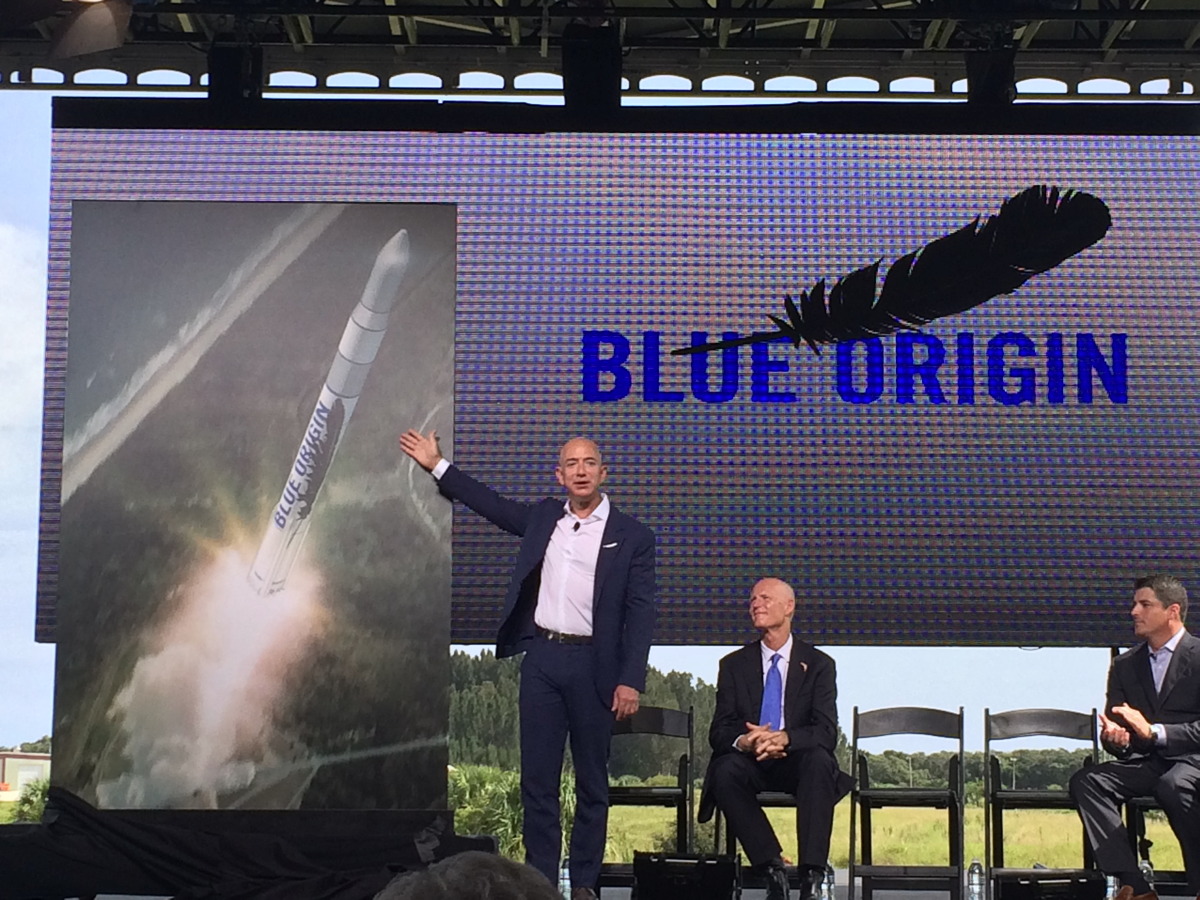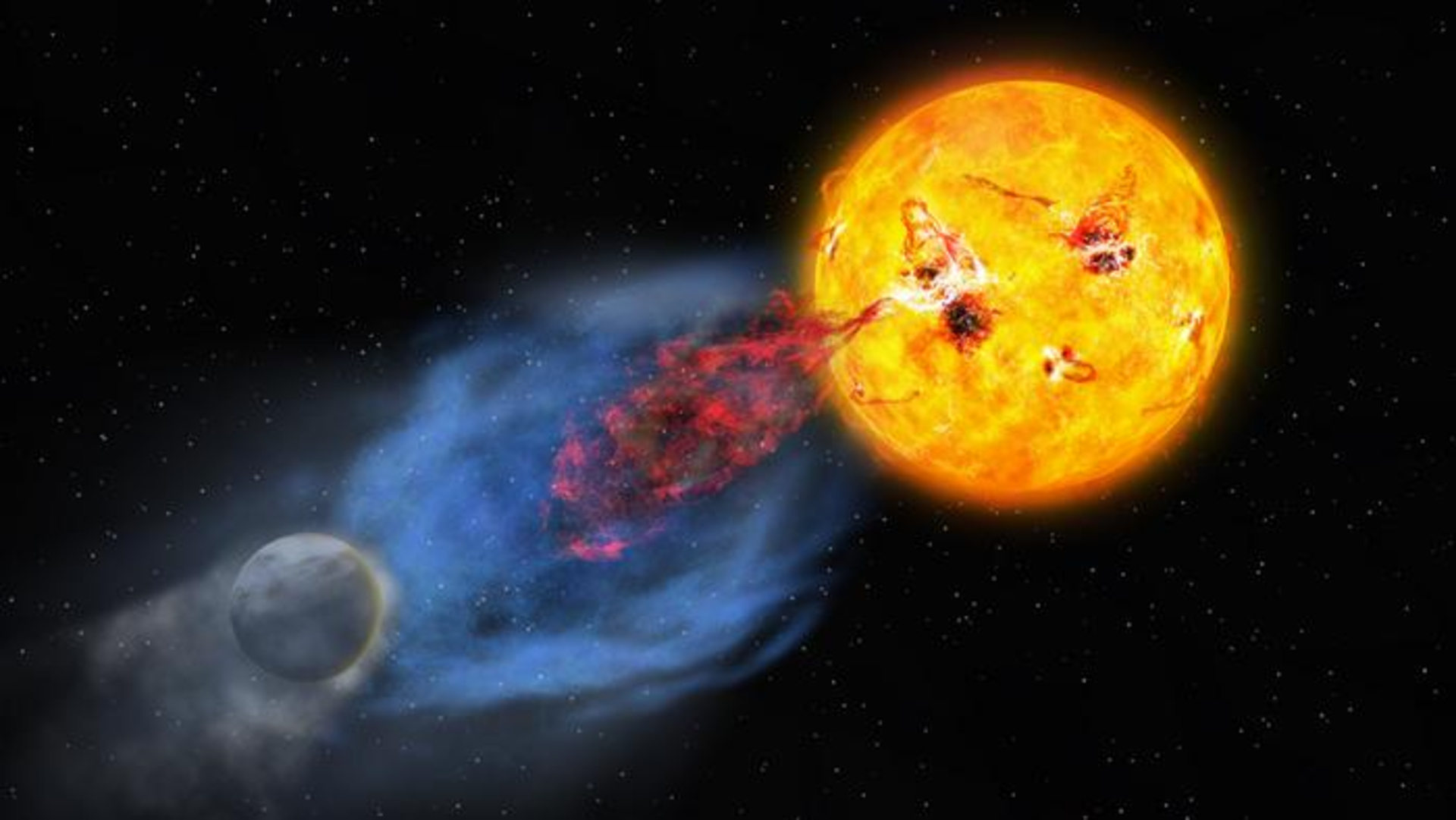Best Space Stories of the Week – Sept. 18, 2015

This week, Jeff Bezos announced that Blue Origin would make a home on Florida's "Space Coast,"; scientists confirmed that an ocean lies beneath the surface of Saturn's moon Enceladus; and NASA astronaut Scott Kelly reflected on reaching the mid-point of his one-year stay aboard the International Space Station. This is our roundup of the best space stories of the week, for Sept. 18, 2015.
Blue Origin makes a home in Florida
Billionaire and CEO of Amazon.com Jeff Bezos announced this week that his private spaceflight company Blue Origin will manufacture, test and launch its orbital rockets from Launch Complex 36 at Cape Canaveral Air Force Station in Florida.
[Full Story: Jeff Bezos' Blue Origin Will Launch Rockets and Spaceships from Florida]
Six months to go in one-year mission
NASA astronaut Scott Kelly and Russian cosmonaut Mikhail Korniyenko are in the middle of the longest consecutive stretch spent on the International Space Station. How are they holding up with six more months of spaceflight to go?
[Full Story: Halfway Home: One-Year Space Crew Rallies for 6 More Months Off Earth]
Breaking space news, the latest updates on rocket launches, skywatching events and more!
Buildings on Mars could be self-building
When humans finally set foot on Mars, they could settle down in homes that build themselves. The Self-deployable Habitat for Extreme Environments (SHEE) project is working on autonomously deployable space and terrestrial habitats.
[Full Story: Future Mars Explorers Could Live in Habitats That Build Themselves]
Who is in the billionaire's space club?
Jeff Bezos, Elon Musk, Richard Branson and Paul Allen have all used their fortunes to start companies that want to make spaceflight more like commercial air travel. Here's some background on each of these men, and what each of their companies offers potential customers.
[Full Story: How Jeff Bezos and Other Billionaires Are Transforming Space Travel]
NASA may push back its next-gen vehicle launch
NASA may delay the launch of its Orion spacecraft, a next-generation crewed vehicle intended to take humans to distant locations like Mars. The launch was initially targeted for August 2021, but after reviewing the status of the program, agency officials said the Orion launch could be delayed, although no later than April 2023.
[Full Story: NASA's 1st Manned Flight of Orion Space Capsule May Slip to 2023]
Robots may run spacecraft-repair shops
The U.S. Defense Advanced Research Projects Agency, DARPA, is developing a robotic arm that could be useful for repairing, refueling and building spacecraft in orbit around Earth. The agency said space-based pit stops will be necessary if space-based traffic is to increase, similar to the way port cities arose with the increase in sea travel.
[Full Story: US Military Foresees Robot-Run 'Transportation Hub' in Space]
Spacecraft finds its 3,000th comet
Launched in 1995, the Solar and Heliospheric Observatory (SOHO), built to study the solar wind, has identified 3,000 new comets in its 20-year lifetime. Many of the comet discoveries were made by citizen scientists sifting through the observatory's publicly available data.
[Full Story: Whoa! Sun-Watching Spacecraft Finds 3,000th Comet]
Middle-school engineer sets Twitter abuzz
Social media exploded after news that Texas middle-school student Ahmed Mohamed was arrested after teachers mistook his homemade clock for a bomb. NASA, former astronauts Chris Hadfield and Daniel Tani, and "Mohawk guy" Bobak Ferdowsi were just a few of the people who voiced their support for Ahmed.
[Full Story: Arrested in NASA Shirt, Ahmed Sets Internet Abuzz with #IStandWithAhmed]
To get water in space, bake asteroids
Asteroid mining could make water and other valuable materials available for space colonies and space-based industry. A new idea called "optical mining" would use mirrors to heat the asteroid and an inflatable bag to collect the water.
[Full Story: Asteroid-Mining Plan Would Bake Water Out of Bagged-Up Space Rocks]
A sunset on Pluto
NASA's New Horizons mission continues to send back breathtaking images of the dwarf planet Pluto. It's most recent gem: a snapshot of a Plutonian sunset. The light makes the thin, hazy atmosphere clearly visible, while towering ice mountains cast long shadows.
[Full Story: Sunset on Pluto: Breathtaking NASA Photo Shows Mountains, Wispy Atmosphere]
An ocean swirls under the surface of Saturn's moon
Despite observing water geysers erupting from the surface of Saturn's moon Enceladus, scientists had been unable to confirm if the icy moon held an ocean beneath its crust, or just an isolated lake. Now, researchers say the slight wobble of the planet is likely caused by an entire ocean sloshing down below.
[Full Story: An Ocean Flows Under Saturn's Icy Moon Enceladus]
Building the solar system to scale
Two filmmakers made an actual scale model of the solar system. With Earth the size of a marble, the model — built in a flat, empty section of desert — was 7 miles (11 kilometers) wide.
[Full Story: Solar System Built to Scale in Nevada Desert (Video)]
Follow Calla Cofield @callacofield.Follow us @Spacedotcom, Facebook and Google+. Original article on Space.com.
Join our Space Forums to keep talking space on the latest missions, night sky and more! And if you have a news tip, correction or comment, let us know at: community@space.com.

Calla Cofield joined Space.com's crew in October 2014. She enjoys writing about black holes, exploding stars, ripples in space-time, science in comic books, and all the mysteries of the cosmos. Prior to joining Space.com Calla worked as a freelance writer, with her work appearing in APS News, Symmetry magazine, Scientific American, Nature News, Physics World, and others. From 2010 to 2014 she was a producer for The Physics Central Podcast. Previously, Calla worked at the American Museum of Natural History in New York City (hands down the best office building ever) and SLAC National Accelerator Laboratory in California. Calla studied physics at the University of Massachusetts, Amherst and is originally from Sandy, Utah. In 2018, Calla left Space.com to join NASA's Jet Propulsion Laboratory media team where she oversees astronomy, physics, exoplanets and the Cold Atom Lab mission. She has been underground at three of the largest particle accelerators in the world and would really like to know what the heck dark matter is. Contact Calla via: E-Mail – Twitter
